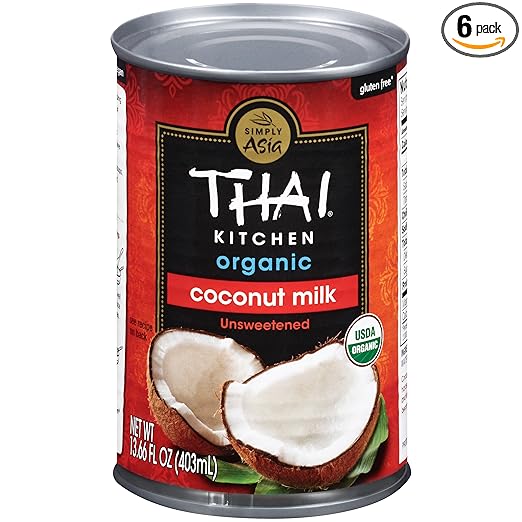
You buy it in a carton, you buy it in a can. You pay extra if you want it in your latte, and you enjoy it in creamy ramen bowls. The proliferation of coconut milk makes sense—with more and more people eschewing cow’s milk and even going full vegan, it’s the kind of flavor-packed dairy alternative that actually adds texture to foods. But, how do we get from that fuzzy, brown, rock-hard coconut to the life milk that’s popping up in everything, from our smoothies to our cereal?

Shutterstock
If you cut a coconut in half, like in this diagram from the Coconut Handbook, you see the outer brown husk and a solid inner white ring surrounding the water inside. That white ring is called the coconut “meat” or “kernel.” That coconut milk is extracted from the kernel, and, if coconut cream is the desired end-product, then gravity or centrifugation (think of those scenes in movies where scientists use a machine to spin test tubes) is used to separate out the higher fat coconut cream.
Thai Kitchen Organic Unsweetened Coconut Milk Pack of 6, $15.90 on Amazon
Don't get caught without for your next curry or smoothie recipe!
As far as the coconut milk you buy at Trader Joe’s, that’s a bit different. It’s usually made of water and coconut cream. Take a look at a few of the major coconut milk brands, like Silk, So Delicious, or Califia Farms, and you can see that the first ingredient is, of course, coconut milk. The following ingredient you find is water and coconut cream. These brands rely on coconut cream for the flavor and texture, and combine it with water to create a milder beverage blend. For Silk and So Delicious, the next ingredient is sugar (7 grams per cup) while Califia Farms mixes in coconut water, and skips the added sugar.

Califia Farms
This is different than the coconut milk you use for curries, soups, and vegan baking—the kind that comes in a can. Take a look at the ingredients in a can of Goya coconut milk, and you’ll see that coconut milk is listed first, and without any adjacent coconut cream component. Goya’s creamy milk is made from the pressing of ripe coconut meat, and is also the best-selling variety in the United States. While water is an ingredient, it’s pretty clear how much less diluted canned coconut milk is, when you see that it contains 9 grams of fat per quarter cup, while Silk is only 5 grams per cup. With all that fat, it’s no surprise, then, why chefs often turn to the canned version.
Related Video: Cereal Milk Lattes
from Food News – Chowhound https://ift.tt/2Caje01
via IFTTT


No comments:
Post a Comment